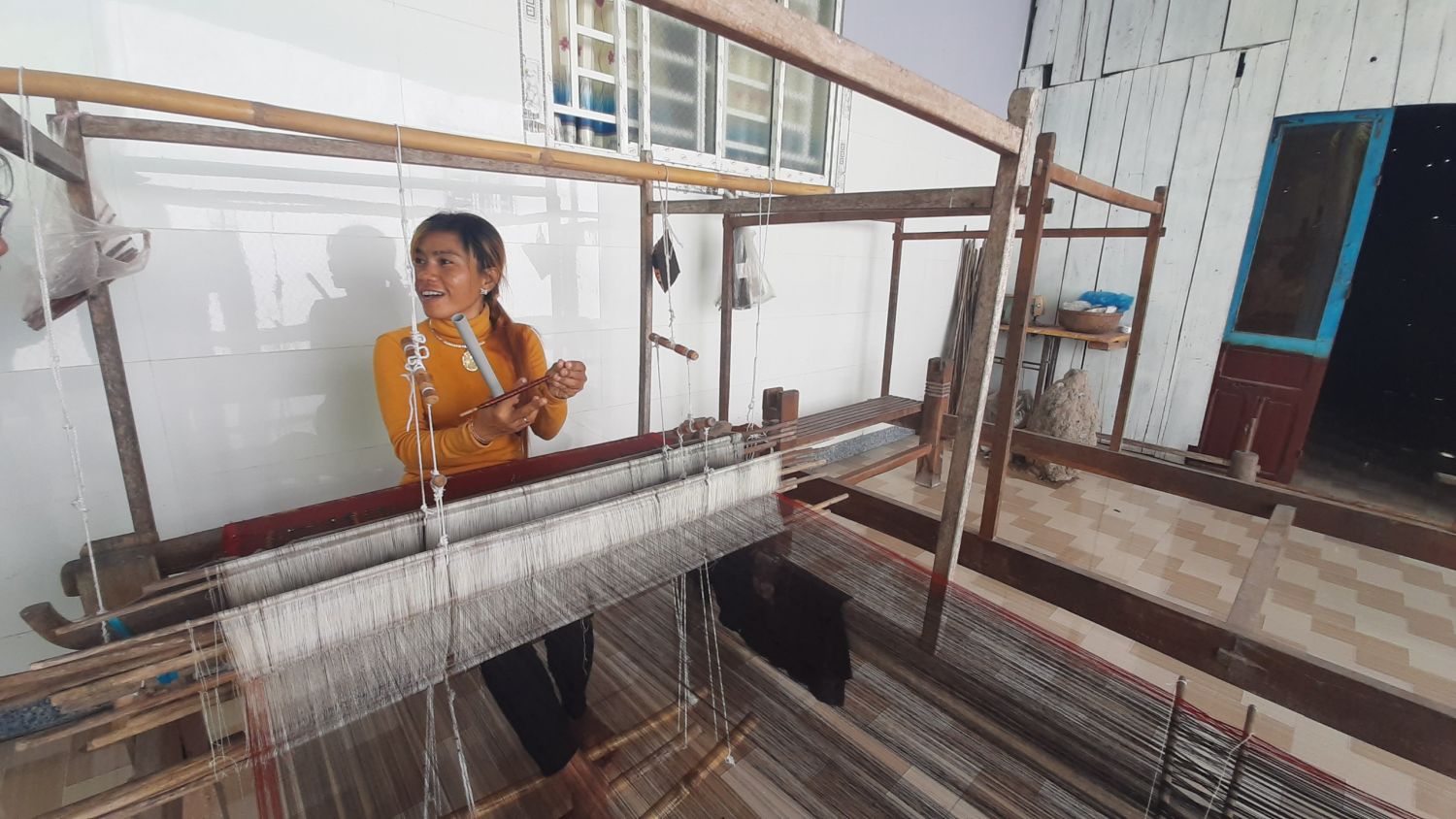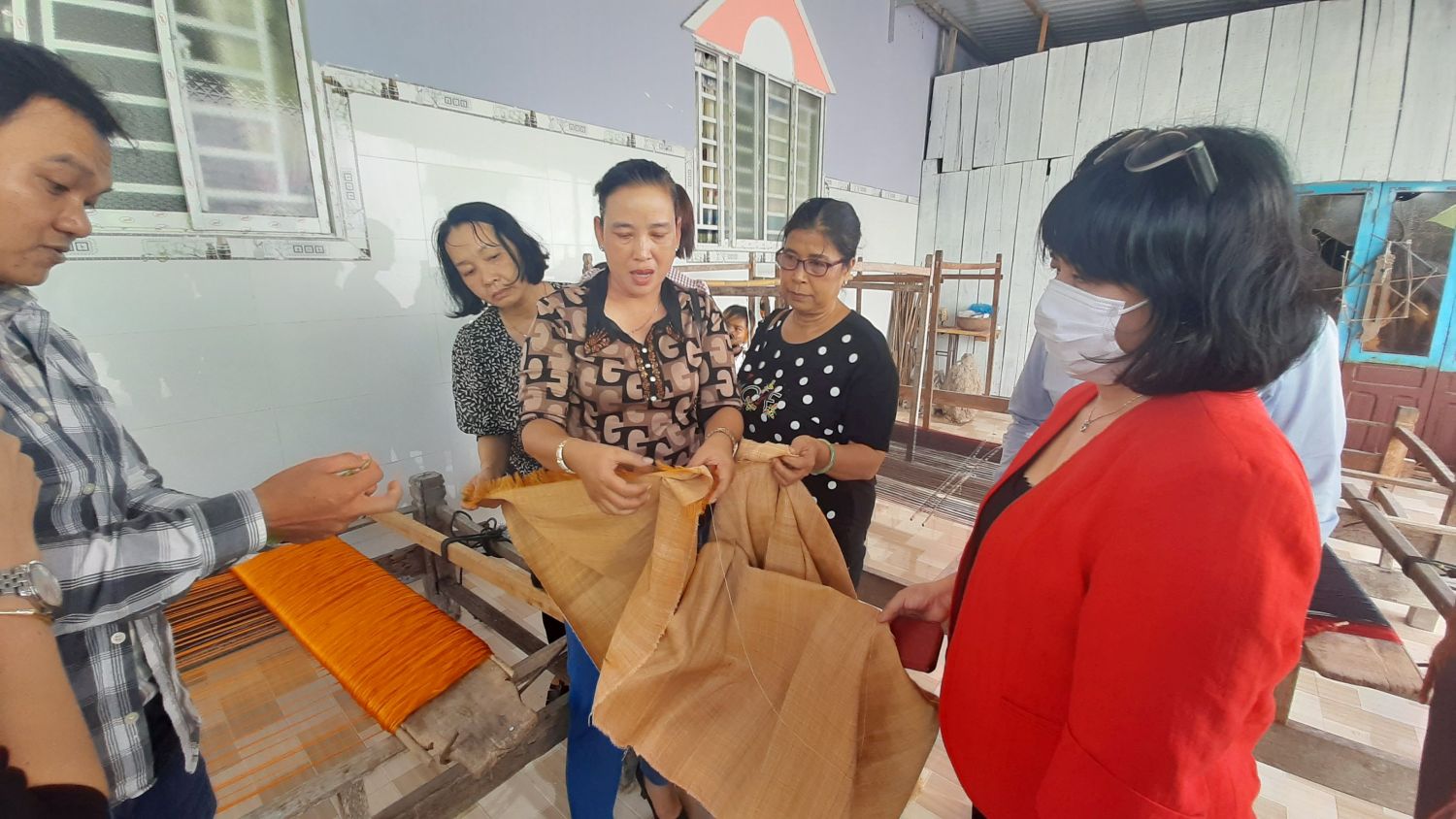Kick-off workshop on lotus silk value chains to expand flood storage in the Mekong Delta
Lotus plants are found throughout Vietnam with their distribution concentrated in the muddy water of lakes and ponds of the Mekong Delta. Lotus parts such as seeds, leaves, buds, and roots have proven economic value for medicinal herbs, cosmetics, and daily food. But the largest part of the plant, the lotus stem, is rarely used. Lotus fibers, which are made from the stem, are of no commercial value in Viet Nam, whereas in Myanmar and Cambodia lotus fibers are used to make high-value clothes and furniture.
To turn unused lotus stems into commercial products to benefit local communities, promote flood-based livelihoods, and increase water storage in the delta, IUCN is starting a 3-year project in An Giang, Dong Thap, and Long An with funding from The Coca-Cola Foundation (TCCF). This is the second phase of the TCCF project in 2018-2020 on piloting flood-based livelihoods.
IUCN is working with local partners to bring an additional 120 hectares into lotus cultivation, conduct training on lotus fiber extraction and weaving, measure the biodiversity and carbon sequestration benefits, and mobilise businesses to support lotus silk product design and market access.
On May 26, 2023, IUCN organised the project launch workshop in An Giang and field visit to Van Giao traditional craft village in Tinh Bien District. It was an opportunity to introduce to a wide range of stakeholders the role of flood-based agriculture in conserving flood storage, discuss lotus silk value chains, and share experiences related to lotus silk production, market access, planning and policy support for flood-based livelihoods.
 Photo: A local women was weaving silk at Van Giao craft village in Tinh Bien, An Giang Province © IUCN Viet Nam
Photo: A local women was weaving silk at Van Giao craft village in Tinh Bien, An Giang Province © IUCN Viet Nam
About 90 participants from the three focal provinces attended the launch. While participants agreed that lotus silk has high economic, spiritual, and cultural values with the potential to diversify farmers' livelihoods and conserve natural resources, there remain big challenges including the shortage of skilled workers, high labour costs to collect stems and extract fibres, and lack of technologies to improve product quality.
The following recommendations were made to support lotus silk production:
- Define standards for lotus silk products and position them as high-end products such as scarfs, table runners, and handkerchiefs; lotus fibers should not be used for medical gauze.
- Coordinate with the Department of Culture, Sport and Tourism, Department of Foreign Affairs, Department of Agriculture and Rural Development, and Department of Industry and Trade to promote cross-sector collaboration in areas such as fashion, tourism, e-commerce, international trade fairs, and domestic traditional festivals.
- Make full use of the entire lotus plant, not just the stems, for product development.
- Use lotus fibers as supplemental materials because of the high costs of pure lotus fiber products.
 Photo: A sample of lotus silk was shown to participants during the field trip in Van Giao craft village, An Giang Province © IUCN Viet Nam
Photo: A sample of lotus silk was shown to participants during the field trip in Van Giao craft village, An Giang Province © IUCN Viet Nam
In the Mekong Delta, there are several lotus-based agriculture models such as integrated lotus-fish farming, lotus-ecotourism farming, and seasonal rice-lotus farming, intensive lotus farming. The uptake of these demonstrations should lead to significant volumes of flood water being retained during the flood season and released during the dry season contributing to the restoration of wetland ecosystems.
According to IUCN’s global standard for Nature-based Solutions (NbS), lotus farming in the seasonal flood plains is considered an agriculture NbS.
At the launch workshop, participants provided a lot of feedback on how the project can achieve its dual goals: expand water storage and create sustainable livelihoods from lotus silk products for local farmers in the Mekong Delta.
